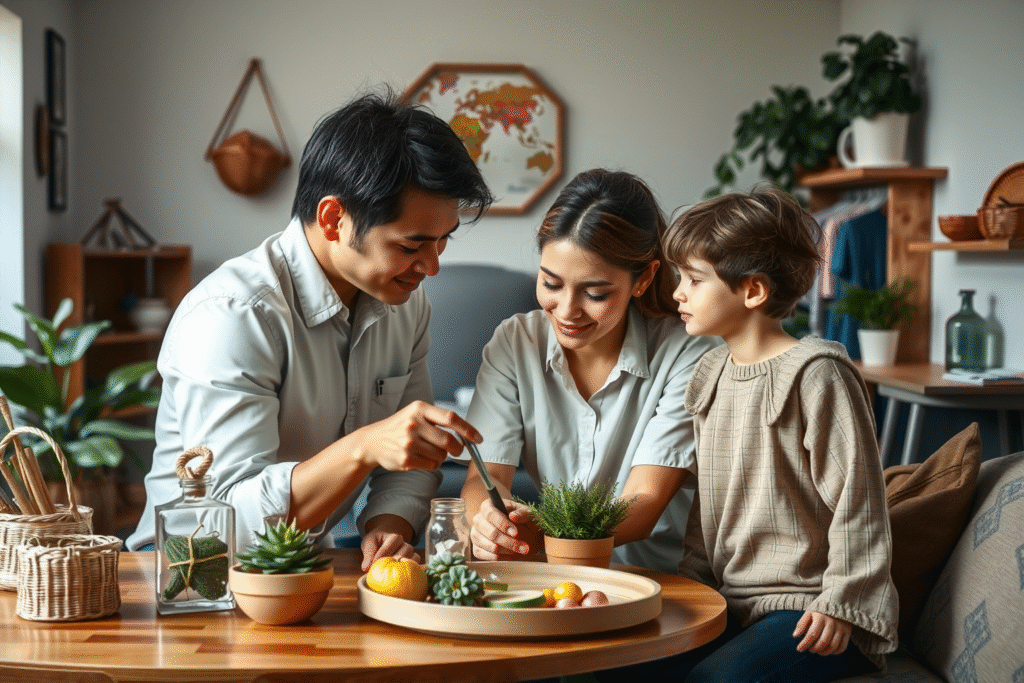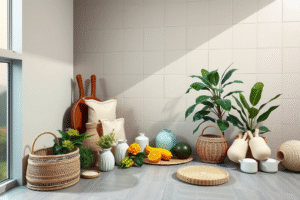The climate crisis has been a hot topic of conversation in recent times. If we want to prevent further damage to our planet, we need to make some big changes. One of the most impactful ways to reduce our environmental footprint is to live a zero-waste lifestyle.
A zero-waste lifestyle means trying to minimize the amount of waste we create and, when necessary, reusing, recycling, or composting it. Families can especially have a large impact since households are responsible for a huge percentage of the waste produced worldwide.
In this practical guide, we’ll explore different ways to implement a family zero waste lifestyle, as well as tips and techniques to make it happen.
Start with Awareness and a Plan
The first step to going zero waste is to develop an awareness of what is being discarded and an understanding of where it ends up. Start with a “waste audit” by tracking which items you and your family throw in the trash each week. Look at the types of food packaging, plastic bottles, paper, and cardboard items, plus things like clothes, toys and appliances, and try to establish what can be made from these and reused. Once you have a better understanding of what you and your family are throwing away, you can begin to make a plan for reversing some of that, and making swaps for more sustainable products.
Decrease Your Waste
Recycling is great, but it’s even better to reduce the amount of waste created in the first place. One simple and effective way to do so is to avoid single-use items like plastic bags and straws. Use a reusable water bottle, coffee cup, and lunch containers. Look for bulk items and use your own bags and containers when shopping. Another powerful way to decrease waste is to prepare your own meals more often with locally sourced ingredients in order to reduce packaging and transport waste.
Make Reusable Swaps
When it comes to reducing your waste, there is a wide variety of reusable and washable alternatives to single-use items. Purchase beeswax wraps instead of plastic wrap, reusable mesh bags for grocery shopping and cloth bags for produce, and reusable coffee filters, utensils, and straws.
Use Compost Bin
Organic waste accounts for a significant portion of the waste stream. Establishing a compost bin will allow you to reuse things like fruit and veggie scraps, coffee grounds, and eggshells to create nutrient-rich compost to top up your plants in your garden. A great way for kids to learn about the cycle of life.
Choose Sustainable Products
When it comes to purchasing items, take a look at the product’s environmental impact. Choose products made from natural and biodegradable materials like bamboo, stainless steel, glass, and cotton. Consider items like natural cleaning products with simple ingredients, bars of soap, and biodegradable toothbrushes and sponges.
Recycle What You Can
If there is an item that can be recycled, make sure to separate it from the rest of your trash. Look for local recycling programs and compost facilities in your area. Educate the family about recyclable items and encourage them to recycle all they can to help in the mission of going zero waste.
Conclusion
Creating a zero waste lifestyle for families can seem overwhelming, but taking it step by step and making conscious choices can really make a big difference. It’s important to remember that every decision we make has an impact on the environment. By reducing the amount of waste we generate, we can start to make a big difference for the future of our planet. Leading by example and creating a zero-waste family lifestyle may inspire others too, and lead to a brighter future for the earth and future generations.





